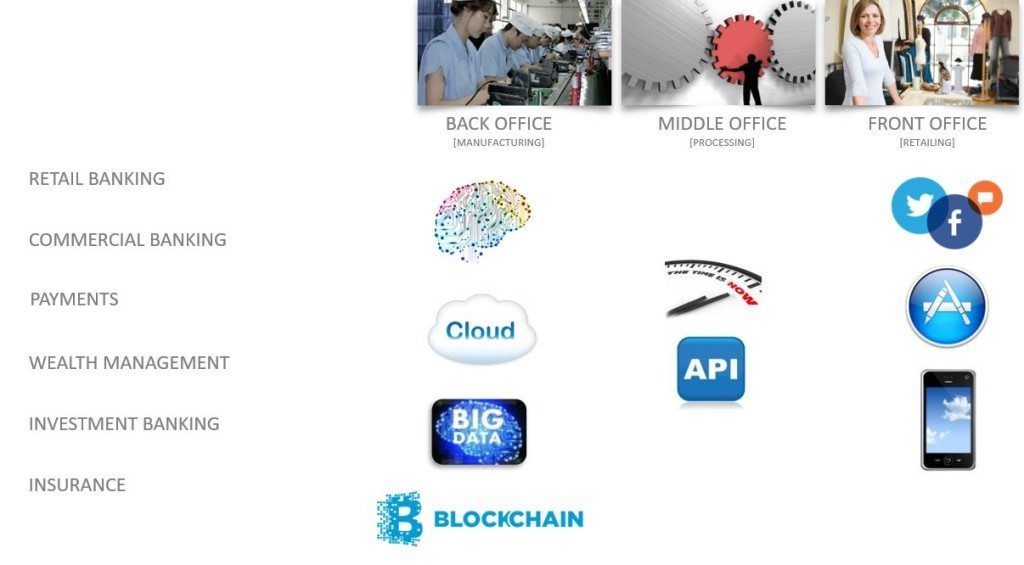
I tried to make some allowance for ANZ running a 40-year-old core system yesterday, by pointing to the fact that people are slow to change and there may well be no compelling reason to switch a legacy system.
Even though I’ve tried to make the case many times:
- Banks with pre-internet age core systems have a heart that is no longer beating
- Why ALL banks will change core systems
- The real reason for core systems refreshment
- Convincing management to renew core systems
and there are many more.
Nevertheless, I can see that some would see that there is no compelling reason because replacing that core system is a big ask. Bear in mind that the system we are talking about was probably an upgrade in 1976 to the core customer deposit account system now that ATMs were being introduced. It was a batch update, punch card based system that, over the years, was upgraded and improved. It could cater for more than just branch needs and ended up providing real-time feeds into internet banking balances through middleware interfaces. This meant that 25 years after introduction, the system resided at the heart of the balance updates for millions of customer accounts and had a complex arrangement of interfaces and accessories that allowed it to look pretty good, even though the bank knew it was archaic. It worked, it wasn’t broken, so why change it?
The bank goes through this logic every year in their Strategic Technology Review, and the answer is always the same. The 1976 system has had so much built up around it, that changing the system would involve a wholesale replacement of everything. It’s not just the core system, but everything that interfaces to it will need to be replaced. That would cost billions and there’s no compelling reason to change it as it does the job.
Another decade goes by, and the argument still stands up. Yes, it’s expensive to maintain our old balance system, but it’s far cheaper and less risk keeping it running than to change it.
Unfortunately, something then happens. The world of technology moves on a pace. What was all locked into simple front-end interfaces to a back-end that does the job, becomes far more demanding. Customers want apps, partners want APIs and competitors are moving from in-house proprietary structures open platforms through cloud. The competition is getting more personal through data analytics and machine learning. They are also lowering costs by getting rid of their old core system and moving to modern internet-age architectures.
However, our little old system in the corner still does its job, and there’s no reason to change, is there?
I guess this is where my core argument for the imperative to replace the core system really comes into play, as we have moved into an internet age of open sourced finance and the business model, architecture and infrastructure must change to keep up. Again. I’ve blogged about this lots of times before:
- Fintech 1, 2 and 3.0 … there’s an elephant in the room and it’s under attack
- 2015: Time to Open Source Finance
- Open sourced banking – give it to me now
- Principles of The Reimagined Bank
- Open sourcing finance: you cannot delegate this project
With the key message that, for the first time, new technologies are eating into our back office core systems.
But some banks can follow the view that this does not create an urgent or compelling need to upgrade a 40-year-old core system.
But then, oh no, what’s the regulator doing? The regulator wants us to provide real-time connectivity to their oversight services using APIs? We have to also offer third party connectivity to our customer balances? And what’s happening with our costs? Our cost seems to be higher than everyone else’s. OK, we can sneak that along into our overdraft fees and credit charges, but maybe our legacy customer might spot it.
OK, time to change. Oh, too late. It’s now going to take seven years, and by the time it’s done, we’re screwed. Ah well, at least we can be acquired can’t we?
So I’ve painted a picture of the future as I see it. The reason is that ONE DAY, ANZ will have to change that system but by waiting for the LAST DAY, they may have left it a day too late.
The reason is that I don’t equate legacy systems to an old house but an old car. An old car we call vintage. We can be proud of our old car. It’s made of metal, it rusts if we leave it outside, it costs a fortune to maintain, it runs on fossilised fuel, but hey, it’s a classic car. It roars down the road and the gear shift between second and third feels amazing.
So what if the young bucks are buying cars with links to their MP3 players – what’s an MP3 anyway? Who needs Spotify in the car, I’ve got a Sony Walkman. That’s a classic too you daft punks.
And the fact that those little dinks and scratches cost me a fortune to deal with is ok, because the car doesn’t need replacing every few years. Just because you change yours every three years, I’ve had mine for forty years and I love her. Sorry, it. It’s a great car.
Then Tesla comes out. A self-driving internet-based transport vehicle that runs on rechargeable electric batteries. Who needs one of those? Then Google starts developing self-driving cars, and Apple is rumoured to be in the game. Do I have to worry? I don’t think so. It’s just a car after all, and all cars run on roads with engines and wheels. Tick. Got those, why change my vintage vehicle.
OK, so all the other guys are changing theirs, but I don’t see any compelling reason why I would need to.
Finally, the Government says that all cars must be self-driving by law and my vintage vehicle can’t do that. Sure it’s cost me a fortune to maintain but changing it seems to be the mandate. Just as I’m about to change it, I’m involved in a multi-vehicle pile-up. Car written off. Me dead. Reason: the driver didn’t realise he had entered a self-driving only zone.
Shoot.
And this is what I think is going to happen to banks that hold onto their ageing core systems too long. The regulator will force them to upgrade it. That will take years and, by this time, will involve the bank being under the cosh of the consultants bandwidth. Imagine it’s now going to cost $2 million a day just to be involved in the change program. Third, it’s going to be far harder to change the bank to work with today’s technologies because most folks in your bank have no idea what today’s technologies involve.
OK so I’m being a little OTT but I saw this happen with Y2K, the introduction of the euro and euro clearing and other deadline day programmes. As a result, in my experience, the only reason a bank hasn’t changed a 40-year-old core system to day is because the CEO believes he or she will be at the helm for only another 2 or 3 years, so leave the risk and cost for the next guys to deal with. That is the reason why core systems reach such a grand old age. Because each generation of management has just wanted to pass the buck to the next generation. That worked for thirty years, but believe me it doesn’t work in this age of open sourced financial interchange.
Chris M Skinner
Chris Skinner is best known as an independent commentator on the financial markets through his blog, TheFinanser.com, as author of the bestselling book Digital Bank, and Chair of the European networking forum the Financial Services Club. He has been voted one of the most influential people in banking by The Financial Brand (as well as one of the best blogs), a FinTech Titan (Next Bank), one of the Fintech Leaders you need to follow (City AM, Deluxe and Jax Finance), as well as one of the Top 40 most influential people in financial technology by the Wall Street Journal's Financial News. To learn more click here...


